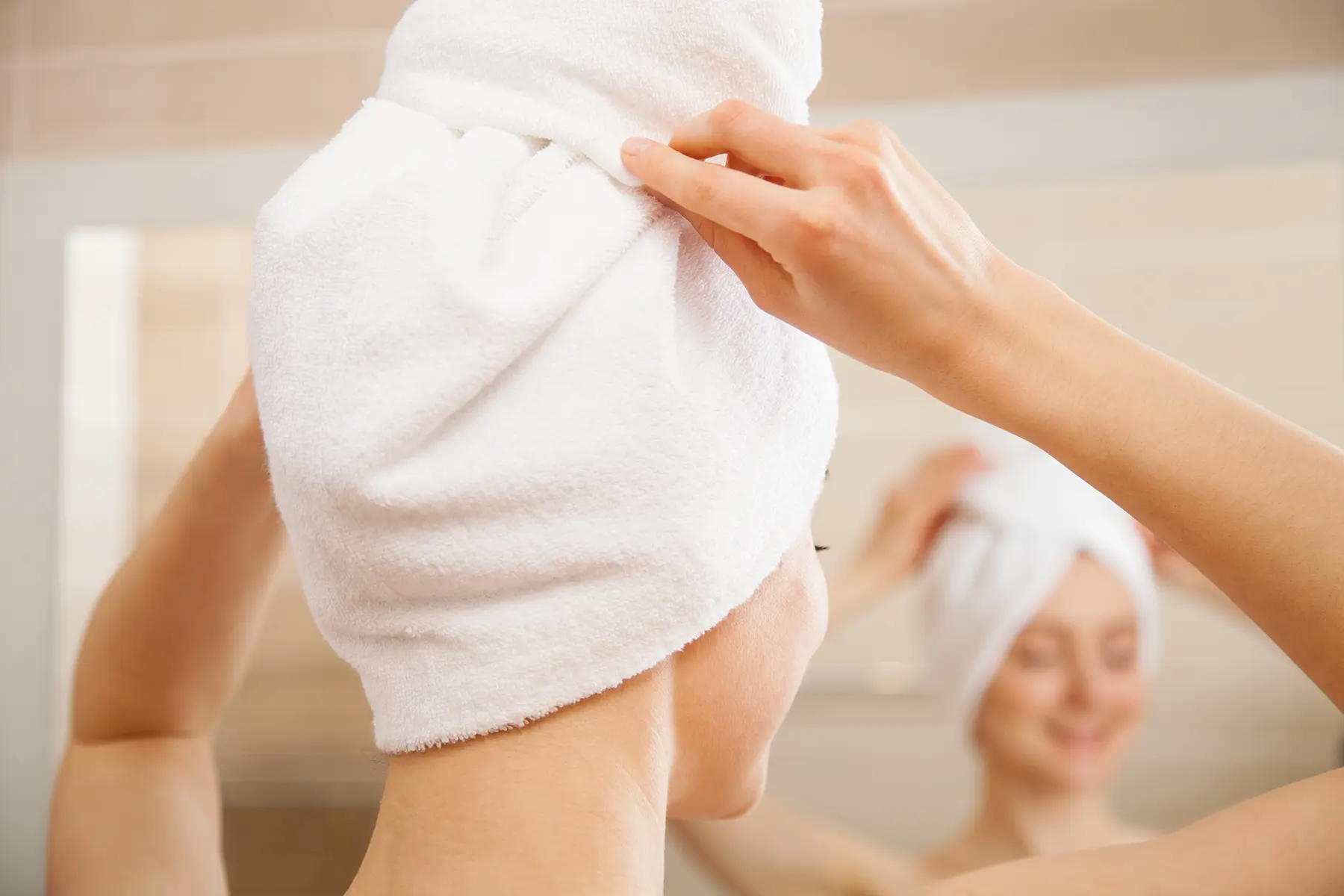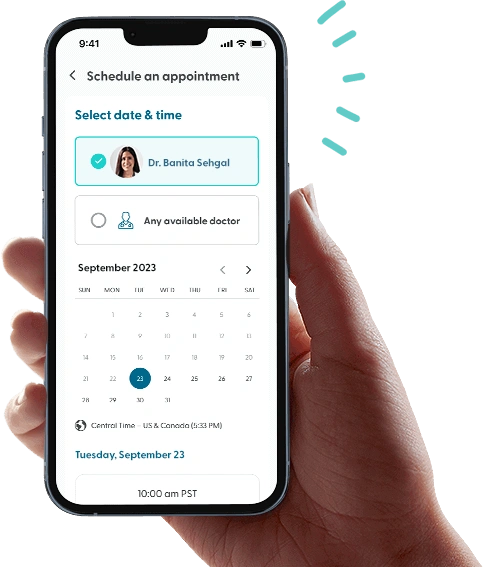Is Air Drying Your Hair Bad? Here’s Everything You Need to Know

When it comes to the best method for drying your hair, there are many options to choose from.
Air drying is one popular method known for being low maintenance and helping your hair recover from heat damage.
However, air drying may not be suitable for all hair types and can contribute to dull and frizzy strands when done incorrectly.
In this article, we’ll cover everything you need to know about air drying your hair, including what to avoid and tips for minimizing damage and enhancing your natural shine.
What is Air Drying?
Air drying is the process of allowing your hair to dry naturally without using heated tools.
This is generally considered a gentle method of drying your hair, only relying on environmental conditions and time.
You can also use a towel to remove excess water from the hair before leaving it to dry on its own.
Potential Benefits of Air Drying Your Hair
Reduces heat damage
One of the key advantages of air drying is the significant reduction in heat damage to your hair.
Frequently using high-temperature styling tools — like hair dryers, straighteners, or curling irons — can strip the scalp of its natural oils, causing hair strands to become dry and brittle.
Helps preserve hair texture and health
Air drying allows your hair to dry in its natural state, which can help preserve its texture and pattern.
This is particularly important for curly or wavy hair types, which can become frizzy and lose definition due to excessive blow drying.
By avoiding harsh drying techniques, hair also remains smoother, which contributes to overall shine and health.
Additionally, this method supports the hair's natural renewal process, allowing it to maintain proper moisture and hydration levels without additional treatments.
More cost-effective and convenient
Beyond the health benefits, air drying is both cost-effective and convenient.
It reduces electricity usage by eliminating the need for a blow dryer, which also prolongs the life of your styling tools by reducing wear and tear.
Air drying also saves time in your daily routine. Instead of spending extra minutes blow drying, you can tackle other tasks while your hair dries naturally.
This makes air drying a practical choice for busy lifestyles or those seeking a more low-maintenance approach to hair care.
Drawbacks of Air Drying Your Hair
Hygral fatigue
Hygral fatigue is a condition caused by the repeated swelling and contracting of hair fibers as they absorb water and dry.
When your hair dries naturally, it may remain damp for longer periods compared to when using a hair dryer, which can put the fibers under stress.
Over time, this can lead to a weakened hair structure, increased breakage, and reduced elasticity.
People with very porous hair — such as curly or damaged types — are particularly prone to hygral fatigue and should avoid air-drying techniques.
Scalp health issues
Keeping the hair wet for too long can lead to various scalp health concerns that may cause uncomfortable symptoms.
A damp scalp is an ideal environment for fungal and bacterial growth, which can cause issues like dandruff, dermatitis, and other infections.
This can become even more problematic in colder or humid climates where hair may take longer to dry.
To maintain the health of your scalp, towel dry it for a few minutes when your hair is wet to ensure sufficient drying.
Hair texture and appearance
For some hair types, air drying may not deliver the best-looking results.
Individuals with fine, straight hair may find that the strands look limp and lack volume when air dried.
On the other hand, people with thick, curly, or wavy hair may notice increased frizz and undefined curls without controlled drying.
For some, the lack of heat during drying can cause a rougher hair texture and increased tangling, making styling more difficult.
Factors to Consider Before Air Drying Hair
Efficiency
The time it takes for your hair to dry naturally can vary, depending on its thickness and various environmental conditions.
If you have dense hair or live in a humid or cold climate, air-drying can be a time-consuming process that may be impractical for your daily schedule.
For those who need to be ready quickly, blow drying could be a more efficient choice — especially when using fast-working, low-heat tools that minimize damage.
Hair type
Your hair type is one of the most important factors when deciding if air drying is suitable for you. Here are some general guidelines and considerations for each hair type:
-
Straight hair: May become limp and flat when air dried, lacking volume
-
Wavy hair: Air drying can either enhance the natural waves or lead to frizz, depending on your drying technique.
-
Curly hair: Tends to benefit from air drying as it helps define curls naturally but can also cause frizz if not managed properly
-
Coily hair: Air drying can preserve the natural pattern and prevent shrinkage but might lead to tangles if not gently detangled beforehand.
If you do decide to air dry your hair, using appropriate products and styling methods can help improve your results.
Key Point: Which Types of Hair Benefit Most from Air Drying?
Air drying is typically best suited to people with fine, wavy, straight, thin, curly, or dyed hair — especially if done correctly.
The lack of heat associated with air drying can help these hair types retain natural shine and strength.
People with thick, coarse, kinky, or relaxed hair should apply a protective product to the scalp if they decide to try air drying.
This can help prevent hair from drying out and becoming frizzy.
Environmental impact
For those conscious of their carbon footprint, air drying is an excellent alternative to electric hair dryers.
Air drying generally conserves energy and reduces your carbon emissions, aligning with a more sustainable lifestyle.
However, if you live in a cold or humid climate, the prolonged drying time could contribute to health issues — such as discomfort or scalp problems.
It’s important to consider your living conditions and make the decision based on what’s best for your overall health.
Tips for Letting Your Hair Air Dry
Best practices for minimizing damage
When done correctly, drying hair naturally can be a beneficial and convenient technique that supports healthy hair.
You can implement the following tips to help minimize hair damage while air drying it:
-
Gently towel dry: Instead of vigorously rubbing your hair, gently pat it with a soft, absorbent towel to remove excess water. This reduces friction and minimizes breakage.
-
Use a wide-tooth comb: Detangle your hair using a wide-tooth comb while it's still damp. This reduces breakage that can occur when detangling dry hair.
-
Apply a leave-in conditioner: A good leave-in conditioner will add moisture, improve manageability, and reduce the likelihood of damage as your hair dries.
-
Avoid tight hairstyles: While your hair is air drying, avoid tight hairstyles that can pull and strain wet hair and put fibers under stress. Opt for loose braids or let your hair hang freely.
Preventing frizz when air drying your hair
Beyond reducing damage, preventing frizz is another potential obstacle when air drying your hair.
Here are a few strategies that can keep your hair looking sleek and shiny when it’s dry:
-
Use microfiber towels: These towels are gentler than regular towels and can help reduce frizz by limiting the roughness and friction during drying.
-
Apply anti-frizz products: Serums or creams designed to combat frizz can be applied to damp hair. These products coat the hair, seal in moisture, and keep out humidity that contributes to frizz.
-
Avoid touching your hair: Once your hair is styled and the products are applied, try not to touch it while it dries to prevent frizz.
-
Dry hair under a fan: If you have curly or wavy hair, drying your hair under a ceiling fan can help keep the airflow consistent, reducing the chance of frizz.
Product recommendations
Using high-quality products on damp hair can help you achieve optimal results when air drying it. We recommend:
-
Leave-in conditioners: Look for products with natural moisturizers like argan or Moroccan oil, coconut oil, or shea butter. These ingredients help to detangle and add shine without weighing your hair down.
-
Anti-frizz serums or creams: Choose products specifically designed for your hair type for best results. For example, lighter serums may be better for fine hair, while heavier creams might be needed for coarse or curly hair.
-
Texturizing sprays: If you want to add volume as your hair dries, consider using a salt spray or volumizing mist. These products add body and texture without the need for excessive heat, such as during a blow dry or when straightening the hair.
Where Can You Learn More About Maintaining Healthy Hair?
While it’s generally recommended to consult a hair care professional about hair concerns, LifeMD can help if you are concerned about your scalp health.
Make an appointment with LifeMD today to learn more about healthy hair and scalp care — all from the comfort of your home.
More articles like this
Feel better with LifeMD.
Your doctor is online and ready to see you.
Join LifeMD today and experience amazing healthcare, discounted labs and prescription medications... plus around-the-clock access to medical guidance.



